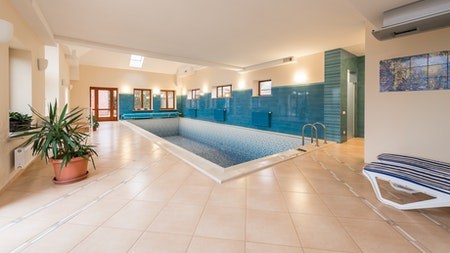While purchasing a new home is definitely an exciting time for many first-time buyers, there are a number of new responsibilities that come along with the title, says Adrian Goslett, CEO of RE/MAX of Southern Africa.
“Aside from the financial responsibilities, there are also some important maintenance responsibilities that need to be taken care of,” he says. “Buying a home in good working order is great, but now it is up to the new owner to ensure that it stays that way. Since prevention is better than cure, this can be done by simply getting into the routine of doing regular maintenance inspections. This will ensure that anything that requires attention can be dealt with before it becomes a major problem and potentially a financial burden. Advanced warning will also allow the homeowner to do some comparative shopping and to find the best person for the job, rather than rushing around when the unexpected happens.”
Goslett notes that as a general rule of thumb, preventative maintenance inspections should be carried out every six months, although certain areas of the home may require slightly more attention and others less. “While most of the checks and maintenance can be done by the homeowner themselves, for certain areas of the home it may be required to enlist the expertise of a professional contractor.”
Goslett gives new homeowners some areas in the home that will need to be checked and maintained regularly:
Main electrical panel
Check the panel for signs of water penetration as this could be a safety issue. The panel should be free from any rust or water marks. The breakers should then all be turned off and back on to ensure that they are all working and none have seized. Contact an electrician if the panel is warm to the touch or smells of burnt insulation.
Roofs
Bad weather can shift roof tiles or damage them, so it is important for homeowners to check their roof on a regular basis. Any damaged, loose or missing tiles should be replaced as they could lead to leaks and water damage in the home. Homes with flat roofs must also be checked, especially for areas that are blistering or have bubbles. Debris should be cleared off the roof and any trees or branches that make contact with the roof should be cut back.
Chimneys
While on the roof, homeowners with a fireplace that have a chimney should check it for any loose or damaged bricks and mortar. It is advisable to have the chimney professionally swept annually. This will clear away the built up creosote and other flammable materials inside the chimney flue. While this will not apply to gas fireplaces, it is important to have them serviced and have a licensed gas technician ensure that everything is operating correctly.
Gutters
Another area that needs to be clear from debris is the gutters and downspouts, as foliage and other foreign objects can clog them and cause blockages. Gutters should also be checked for leaks or holes that may require some repair. It is advisable to also check that the gutters are securely attached to the wall and that they are positioned to drain water away from the house.
Windows and doors
Broken or cracked window panes should be replaced as they could be a safety hazard. Old or sun-damaged window putty can also be reapplied where necessary. Window and door finishes should be checked for any paint deterioration or rot. Ensuring that the windows and doors seal properly will help with reducing utility costs by making it easier to heat or cool down the inside of the home. Be sure to check whether any door frames have shifted over the last six months as that could indicate foundation or structural issues.
Walls and ceilings
When inspecting walls and ceilings, the main things to look for are cracks and damp areas. Vertical narrow cracks in the wall can be caused by minor settlement or normal shrinkage. These are generally not too concerning and can be filled. However, vertical cracks that exceed 3mm in width could be due to major settlement problems and should be checked and evaluated by an engineer. Water marks on the interior walls or ceiling should be noted and monitored. Damp within the wall will cause the paint to bubble, while damp in the ceiling could cause it to sag or, in some cases, collapse. Remember to check the walls and ceiling in the other buildings on the property such as the garage or staff accommodation.
Paint
While paint adds to the aesthetic appeal of a home, its primary purpose is to form a protective layer against the elements. It protects metal from rust and wooden fixtures or fittings from sun-damage or rot. Painted areas that are bubbled, peeling, cracked or blistered should be inspected and repaired if necessary as well as repainted.
Patios and decks
As with paint, vanish or sealant also acts as a protective layer. Wooden patios or decks need to be sealed properly to avoid warping or water damage. If the deck is sealed correctly, water should bead on the surface, however if the water is absorbed, it is ineffective and the deck will need to be sanded down and resealed. Another concern is insect infestation, so any wooden areas should be inspected and fumigated if necessary.
General fixtures
Once all the major elements have been inspected, check for things such as toilets that run continuously and leaking taps. Ensure that toilets are sealed and secured to the floor and check that the sealant and grouting around all kitchen and bathroom fixtures is still functioning as it should. This will prevent water leakage behind tiles, which can cause mould and rot.
“While not entirely inclusive, this basic list will help homeowners to have a better idea of where to start when inspecting their property. Preventative measures are far better than being caught unaware. Taking good care of a home will help to ensure the safety of those who live there, along with its capital appreciation over the long term,” Goslett concludes.


